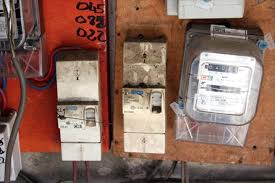APA-Abidjan (Ivory Coast) The adjustment to the electricity tariffs should enable the sector to reduce its
operational losses by 76 billion CFA francs on a full-year basis.
The Ivorian Minister of Mines, Petroleum and Energy, Mamadou Sangafowa-Coulibaly, announced the measure at a press conference in Abidjan on Thursday, assuring consumers that the impact on the various targets is virtually zero.
The increase will apply to electricity consumption from July 1, 2023.
According to Mr. Sangafowa-Coulibaly, 89 percent of subscribers are not affected by this adjustment. This is to protect vulnerable groups and limit the impact this woud have on the cost of living.
On the proposal of the National Electricity Regulatory Authority, and after analysis by the Electricity Tariff Advisory Commission, the government has decided on an average electricity price adjustment limited to 9.6 percent, he noted.
According to the breakdown of the average adjustment rate (9.6 percent), 5A and 10A subscribers are not affected. The adjustment is 10 percent for customers of 15A and over and professionals, and 15 percent for medium-voltage and high-voltage customers.
“Despite this effort on the part of only 11 percent of subscribers, the average price per kWh in our country remains one of the lowest in our sub-region and well beyond,” he noted.
He pledged the continued optimisation of operating costs and the constant support of the state to ensure that the sector regains its financial equilibrium.
The Minister of Mines, Petroleum and Energy justified this tariff adjustment to the cost of electricity by pointing out that the gap between the financial needs of the electricity sector and the resources it generates is persistent and growing.
The operating loss resulting from the difference between the average selling price (CFA73/KWh) and the average cost (CFA89/kWh) is CFA16/kWh,” he said, pointing out that for the year 2023 alone, the loss is estimated at 161 billion CFA francs.
To satisfy the numerous demands for network extension and connection, and to electrify all the country’s localities by 2025, the state of Cote d’Ivoire will need to double its production capacity by 2030 to over 5,000 megawatts.
In addition, the country will need to significantly increase the proportion of renewable energies in its generation mix, from the current 34.5 percent to 45 percent by the same date. And this despite the investments made in the sector.
National demand for electricity has grown at a steady rate of 7.1 percent per year, electrifying 4,168 localities, increasing the coverage rate from 33 percent in 2011 to 83 percent in 2022, and tripling the number of subscribers over the same period, from 1.1 million in 2011 to 3.6 million in 2022.
Cote d’Ivoire’s installed capacity has risen from 1,391 megawatts in 2011 to 2,548 megawatts in 2022, an increase of 83.2 percent. As for transmission, the network comprises 7,484 high-voltage lines (HTB), 3,000 km of which were built over the last decade.
As for distribution, 10,934 substations were built over the same period, out of a current total of 18,691, representing an increase of 141 percent.
Cote d’Ivoire supplies electricity to several countries in the West African sub-region.
AP/fss/as/APA


